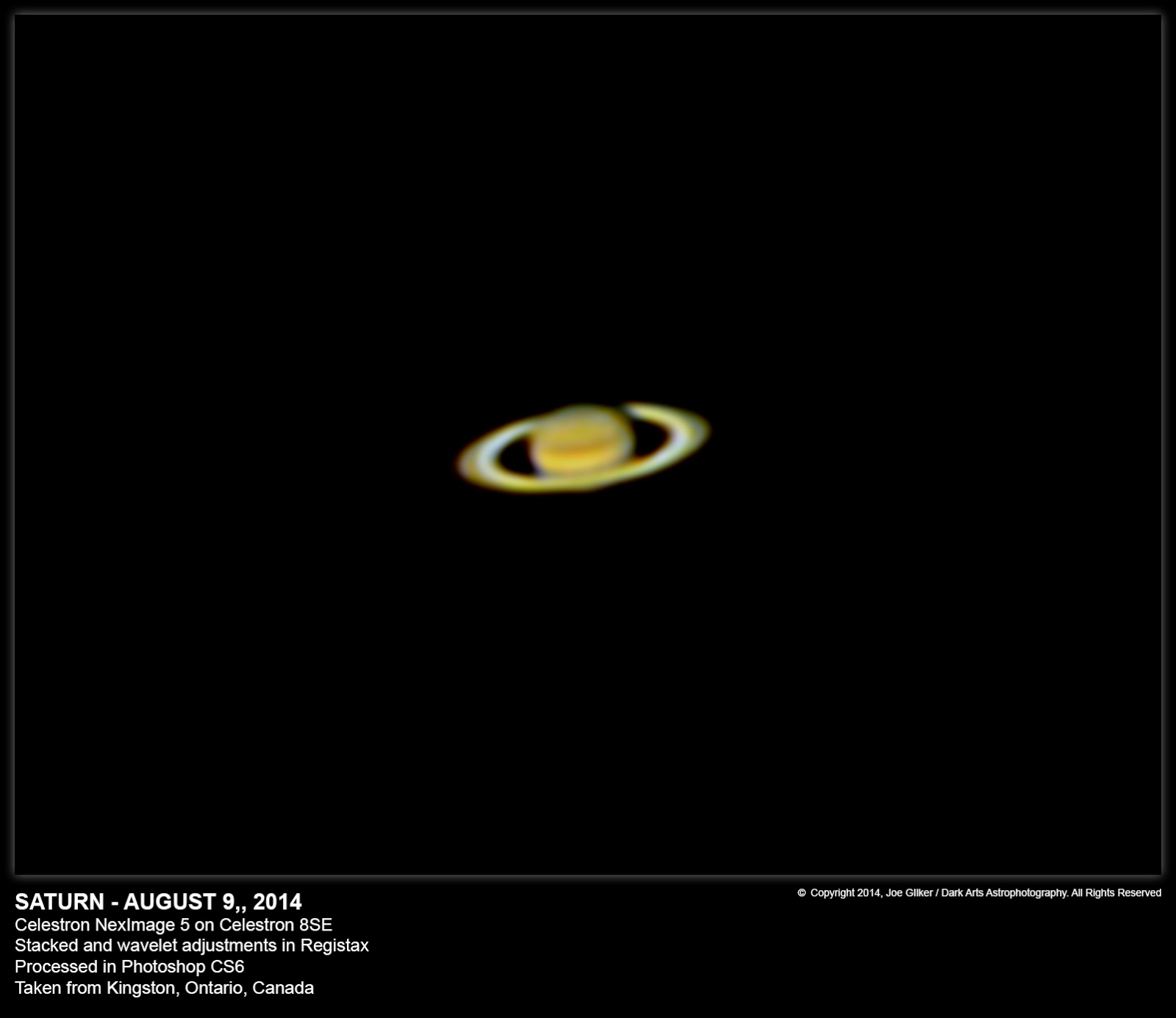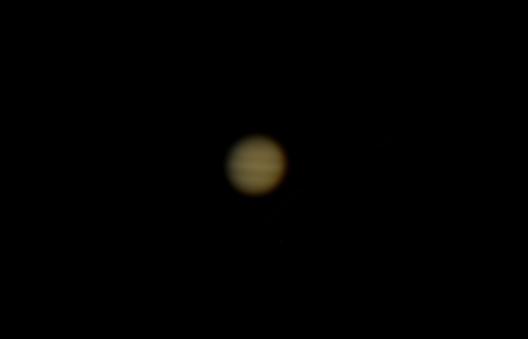When looking ahead, a year always seems like a long time. But when we look back, it really seems only like yesterday, despite the fact that a lot may have happened in that period of time.
When I consider where I was with astrophotography exactly 1 year ago, I found myself just starting to be comfortable with my equipment, the use of it, and the post processing of my images. I was at the point where I knew enough to be able to get decent results some of the time. If I managed to get acquire good data, the post processing went well. If my data was difficult, chances are I’d have one hell of a time processing it and would end up junking it. And by junking it, I don’t really mean deleting the files. I just meant filing it away on my network storage in my image archive.
In the last year, I’ve become far more proficient with Photoshop and other post-processing techniques. I’ve revisited old data of deep space objects a few times and played with it seeing if I could improve on the original images. Overall, I’ve noticed huge improvements in my reprocessed data just because I now actually understand what I’m doing in Photoshop. I’m not just repeating something I saw in a tutorial video hoping it works out. In a couple of cases, I managed to pull up old data that I thought was trash and actually make it work.
But there was one area where my experience is still slim, even to this day. That’s lunar and planetary photography. I’ve done alright with lunar imaging. Wide field lunar imaging using my DSLR camera is pretty good. I have a decent handle on that and the post-processing required. But imaging with my Celestron NexImage 5 had given me mixed results. I had gotten some pretty decent shots of the moon overall, and a few so-so images of Saturn and Mars. But I never seemed to really come close to what I’d seen other people doing. I was quite unsure if I was doing something wrong, or my camera was really just overpriced junk.
To be fair, I purchased my NexImage 5 in May hoping to get shots of the planets through the summer via my 8″ Meade LX90. Schmidt Cassegrain scopes are great for planetary and lunar imaging due to their long focal lengths and the great resolution their larger primary mirrors can deliver. But as luck would have it, my LX90’s mount died 3 days after getting the camera. And for anyone who’s followed this blog or my astronomy adventures via the various astronomy-related Facebook groups I’m a member of, you’ll know the issues I had dealing with Meade to get my scope repaired. I chronicled the ordeal in another blog entry earlier this year.
So while Jupiter, Saturn and Mars were at their prime, I didn’t have the scope the NexImage 5 was intended to be paired up with.. By the time I got the scope back at the end of the summer (still broken) and got it operational again, all 3 planets were basically setting just as night fell and I never got a change to image them with my LX90.
The same day I bought the NexImage 5, I also bought my Sky-Watcher 120 mm f/5 refractor and AVX mount, so luckily, I had a scope to use through the summer. I did make several attempts to image the planets using that scope. I got a couple of acceptable shots of Mars and Saturn, but the results were rather underwhelming. The small scope is intended for wide field imaging, not for planetary use. Although I did get some decent shots of the moon with it, including a really nice high resolution mosaic of the moon assembled for 16 different images stitched together.
 |
| Flickr link: https://www.flickr.com/photos/crunchmeister/14862673035/in/set-72157646290115524 |
Aside from that, most of my planetary images were just borderline acceptable, My 2 best were shots of Mars and Saturn taken on May 24 as seen here.
 |
| Flickr link: https://www.flickr.com/photos/crunchmeister/14264099871/in/set-72157646854022304 |
 |
| Flickr link: https://www.flickr.com/photos/crunchmeister/14043313980/in/set-72157646854022304/ |
All things considered, I’m certainly not disappointed with either of those shots, but compared to my deep sky and widefield imaging, they left a lot to be desired. And of course, I knew the scope was the issue. Mars is difficult even in larger scopes. I’m in no way disappointed. The image of Saturn is also quite good considering the equipment that it was shot with. Since I barely knew what I was doing in post processing with planetary images, I think the results were good all around. But I was DYING to try out my NexImage camera on my LX90.
In August, my main astro-buddy Kevin finally got his own scope – a Celestron NexStar 8SE, an 8″ Schmidt Cassegrain. So having access to an 8″ SCT that was very much comparable to mine, we decided to test my planetary cam on it. As luck would have it, the atmosphere was terribly turbulent with less than ideal seeing conditions and the planets were low on the horizon, but I had to try anyway. And the resulting image I got of Saturn was a vast improvement over my refractor. It wasn’t great by any means, but finally I was getting good resolution and colour. The big scope’s extra magnification and aperture made a huge different.
 |
| Flickr link: https://www.flickr.com/photos/crunchmeister/14890583022/in/set-72157646854022304/ |
While this was a huge improvement over my past attempts, I still wasn’t truly satisfied with my results. But it was an improvement, and at least it showed that really I could do much better than what I’d been doing. Unfortunately, I’ll have to wait till next spring when Saturn is once again visible to try to top this image. In the meantime, I have some other old data of Saturn that I want to see if I can improve on.
But this has been a bit of a digression of the topic of this blog entry – trying again with failed data. But I felt I had to go on this tangent and put this info and these samples out there as a preamble (along with some eye candy) so it fit in the great context of the story in terms of what my previous planetary imaging experience had been.
While my hands-on experience with planetary imaging has been fairly limited, I have learned enough about Photoshop and other tools of the trade that when I saw some of my older data that I had written off as “scrap”, I knew it could be salvaged. The best example I’ve come up with is my first attempt at shooting Jupiter back on Nov 4, 2013. I was out shooting other things that night, and Jupiter rose. I had my Nikon D7000 mounted on my LX90. So I took a series of images of it. Now, for those in the know, a DSLR on an 8″, f/10 SCT is not the ideal for planetary imaging, but I thought I would try it out. With my total lack of knowledge on how to process images at the time, this is the best I could come up with.
 |
| Flickr link: https://www.flickr.com/photos/crunchmeister/10700140875/in/set-72157646854022304/ |
| So you can definitely tell what planet it is, but it’s dim, and there’s really no detail in it at all. I uploaded it to Flickr anyway because it was my first image of Jupiter, and it would be the benchmark by which I would judge future attempts.
And this is the data that I came across in my sorting yesterday. I saw the source images, and to my slightly more experienced eyes, it actually looked pretty good. It certainly wasn’t the train wreck I had originally considered it to be. So I took it upon myself to see what I could do with it. Imaging my surprise after stretching the histogram and 4 Galilean moons jumped out of the image! I couldn’t see them in the source frames, but there they were! I was amazed. And I started messing with different processing techniques to sharpen and enhance the image. After a couple of hours, I finally settled on this as a final version.And I have to say, I’m amazed with the result. |
| Flickr link: https://www.flickr.com/photos/crunchmeister/15736900025/in/set-72157646854022304/ |
In terms of wide field images of Jupiter and its moons, this is actually pretty good. I had no idea that the old data I had collected was this good! Had I known this was possible last year, I would have put more effort into it. But the frustration of not being able to do anything with it due to my inexperience caused me to give up on it. Until now, that is. And I’m glad that I returned to it.
So I guess this really goes to show what a year’s worth of experience using post processing tools can really achieve. I certainly don’t consider myself an expert in the field by any means. I’m still very much a novice. But results like this really serve to validate the knowledge and experience I’ve acquired in the last year. And it makes me hopeful for what I’ll be able to achieve in another year. And perhaps even sooner, as Jupiter is starting to rise on the eastern horizon at about midnight. It’ll be high enough to image earlier in the evening very soon, and I fully intend to take advantage of that and get as many images of it as I possibly can. And Saturn will be following suit shortly thereafter, giving me yet another window of several months to try to surpass my previous attempts.
The lesson learned here is that just because I’m not able to do anything with difficult data I’ve collected today doesn’t necessarily mean it’s wasted. At some point down the road when I get better at the dark art of Photoshop, I may just be able to salvage it, as I’ve done today.
So now I must return to the sorting of my old data to see what other potentially hidden gems I can fine. So until next time, clear skies and keep you eyes to the sky.
